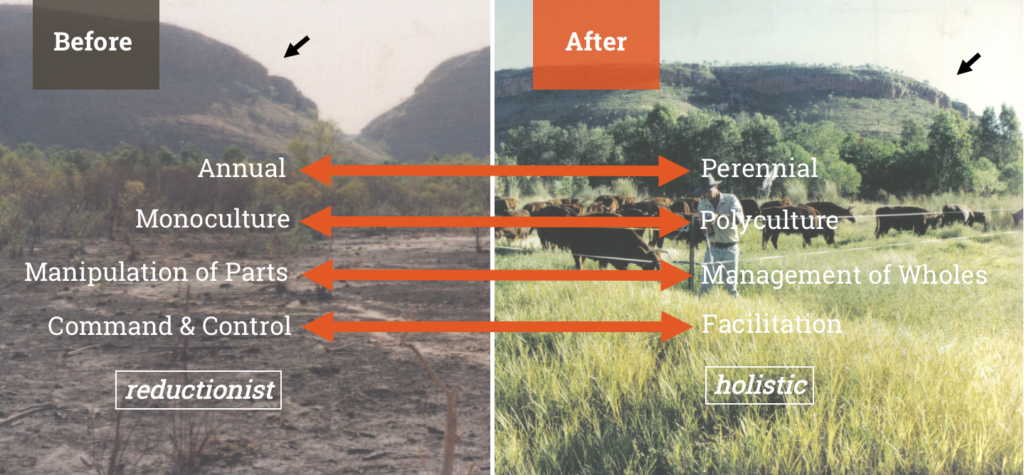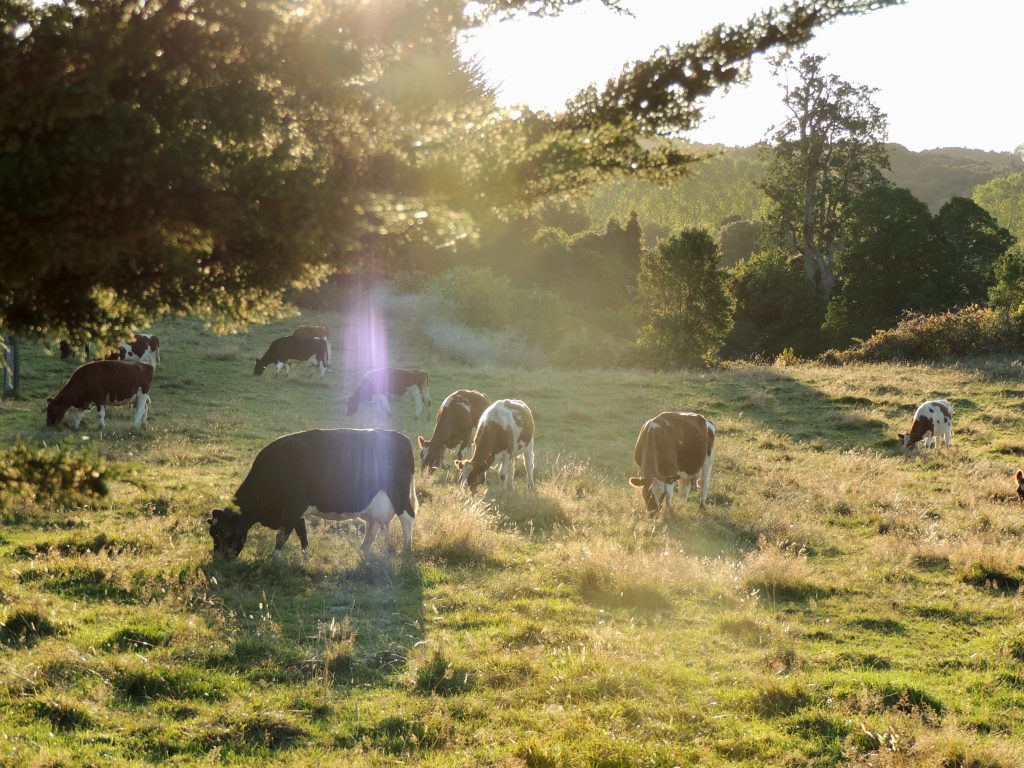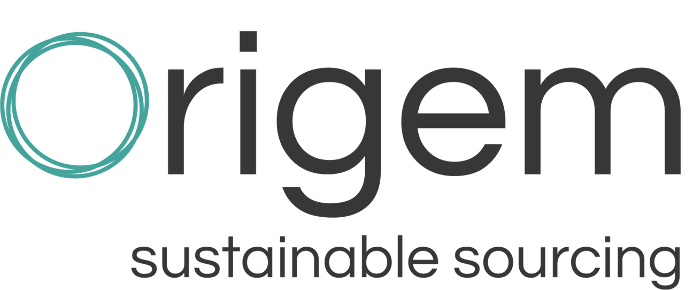Since 2020, regenerative farming has been the talk of the town and has become THE trend. Beyond food commodities, this alternative mode of production is attracting more and more sectors, such as fashion or cosmetics, both of which are linked to agricultural raw materials.
What does this so-called “regenerative” agriculture really bring? How is it managed?
What is the difference with organic farming?
Who uses it? Is the buzz justified?
Origem offers you here some answers and food for thought.


Principles and benefits
Particularly suited to arid, eroded or very impoverished areas, regenerative agriculture is an alternative system to conventional agriculture, inspired by permaculture and agroforestry practices.
Proposed on a consensual basis by two American institutions[1], the first definiton appeared in February 2017 :
“Regenerative Agriculture” describes farming and grazing practices that, among other benefits, reverse climate change by rebuilding soil organic matter and restoring degraded soil biodiversity – resulting in both carbon drawdown and improving the water cycle.
Regenerative farming is therefore based on a holistic approach considering crops or livestock as a whole (the environment, the farm and its community), with the aim of :
- Regenerate (degraded) soils and increase their fertility by reconstituting their organic matter and restoring their biodiversity;
- Reintroduce and promote CO2 sequestration in soils and vegetation;
- Increase resilience of ecosystems (soil, air, water, biodiversity) but also of farming communities to diseases, pests and climatic hazards.


Concretely, in terms of practices, regenerative farming eliminates ploughing and involves, for example, the introduction of cover and intercropping crops (maintenance of plant cover); crop rotation; the use of natural fertilisers (application of compost and manure); grazing; the integration of windbreaks, quickset hedges, contour cultivation, etc.
Thus, the regenerative system makes a difference by its very specific objective of soil regeneration. Organic farming, on the other hand, focuses primarily on preserving and maintaining soil quality, relying mainly on restricting and limiting inputs.
Existing standards and certifications
However, in contrast to organic farming, the certification system of the regenerative model is still in its infancy. Today, two major programmes with their own specificities coexist.
Carried by the American Regenerative Organic Alliance, the Regenerative Organic Certified standard (ROC™) requires ambitious practices in terms of soil health (with regular soil testing), animal welfare and social equity. In particular, compliance with the US Organic Production Model (USDA) is a prerequisite.
A pilot experiment carried out in 2019 on some twenty farms in the United States and Central America led to the revision and publication of the standard in June 2020.
Example of partners of the pilot experiment: Patagonia, Dr. Bronner’s.
To know more on the standard: https://regenorganic.org/
While ROC certification applies to all agricultural production (whether intended for the food, textile or cosmetics sector), the second certification system mainly concerns livestock systems (meat or dairy products, wool and leather).
Developed by the Savory Institute, the Land To Market programme links brands and retailers with farmers engaged in regenerative animal husbandry practices. Their compliance is verified using the Ecological Outcome Verification (EOV) tool, a soil and landscape assessment methodology measuring biodiversity, soil health and ecosystem functions. The programme is complementary to other certifications (which provide a framework for agricultural practices) by proposing the monitoring of ecological indicators over time.


Example of partners of the programme: Kering, Eileen Fisher, Timberland…
To know more on the programme: https://savory.global/
Further experiments to implement
Today, these two main certification schemes are based on different approaches, one focusing on practices and the other on results. How will the initiatives be able to converge? Is a harmonisation of verification practices possible? And will farmers be able to get a fair value for the efforts made to achieve these ambitious objectives?
If one can understand the enthusiasm generated by these standards in construction, beware of haste. Transforming the supply chains at source requires patience.
Thanks to the on-going pilots, we will soon benefits from clearer understanding and data to assess the advantages and challenges of this new farming model and its certification systems … All this, to gain clarity and better duplicate the initiatives!


[1] Regenerative Agriculture Initiative, California State University, Chico; andThe Carbon Underground
Want to learn more? Here are few useful weblinks:
https://magazineantidote.com/mode/agriculture-regenerative/
https://regenerationinternational.org/2017/05/05/quest-ce-que-lagriculture-regeneratrice/
https://www.willagri.com/2020/05/25/lagriculture-regenerative-est-rentable/



